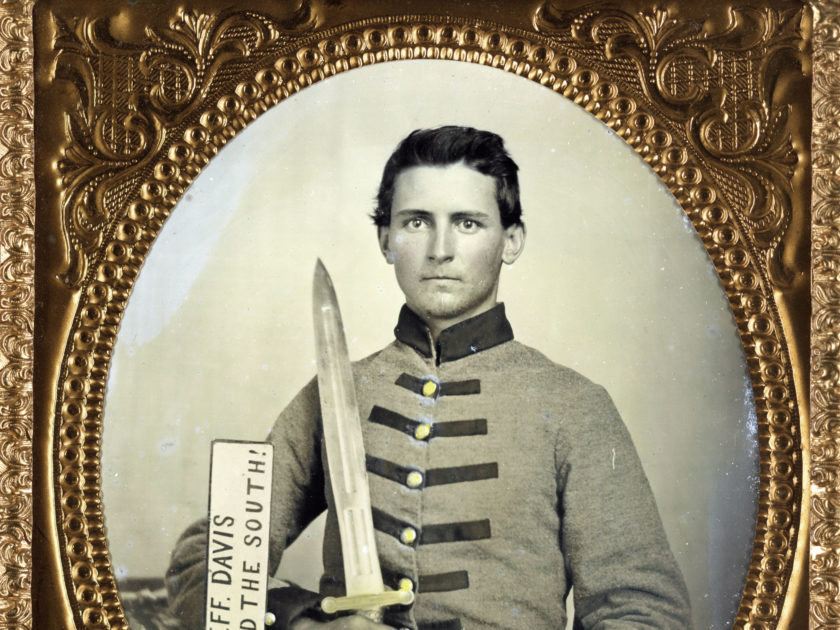One of my favorite moments at a collector’s show is the instant when I open the case of an ambrotype or tintype and peer into the face of the soldier pictured inside. Equally enjoyable is the conversation that follows, as the owner of the photograph and I scrutinize his uniform, equipment, backdrop and other details. We share observations as they come to mind: “Looks early war.” “I’ve seen that backdrop before.” “He’s holding a D-Guard Bowie knife.”
Another comment that often surfaces during these on-the-spot examinations is worthy of note: “Could be a prop. Maybe not.” Though it may seem innocuous, the question of whether or not the musket a soldier carries or the uniform he wears actually belonged to him is a hot topic. At the heart of this debate lay an essential question: What is a prop?
One answer that resonates with me came as one result of a lively email exchange with a collector: “A prop is an object that a soldier did not himself bring into the studio. A prop is something that was supplied by the photographer or a friend who came with the soldier to the photographer’s establishment. If a soldier posed with a book that was sitting on the table in the studio, that’s a prop. If he brought in his personal copy of a favorite book, then it is not a prop—it would be a personal object that has direct bearing on him.”
In this issue, MI explores the use of weapons as props. “Armed to the Teeth?” by Katelyn Brown brings to light key factors to consider when distinguishing props from personal items. Brown’s narrative is illustrated with selected photos and analysis based upon her investigations. We can consider this a first foray into one aspect of a much larger topic.
There’s more scholarship to be done to increase our knowledge and understanding of how props were used and why.
Of one fact we can be certain however: The desire to be perceived as warriors was strong in citizen soldiers. Throngs of fresh-faced boys who marched into local photographers’ studios expected to come away with a portrait that depicted them full of fight and brimming with confidence. Brandishing a musket or gripping a revolver enhanced the effect. Where those guns came from remains a complex question.
Editor & Publisher

